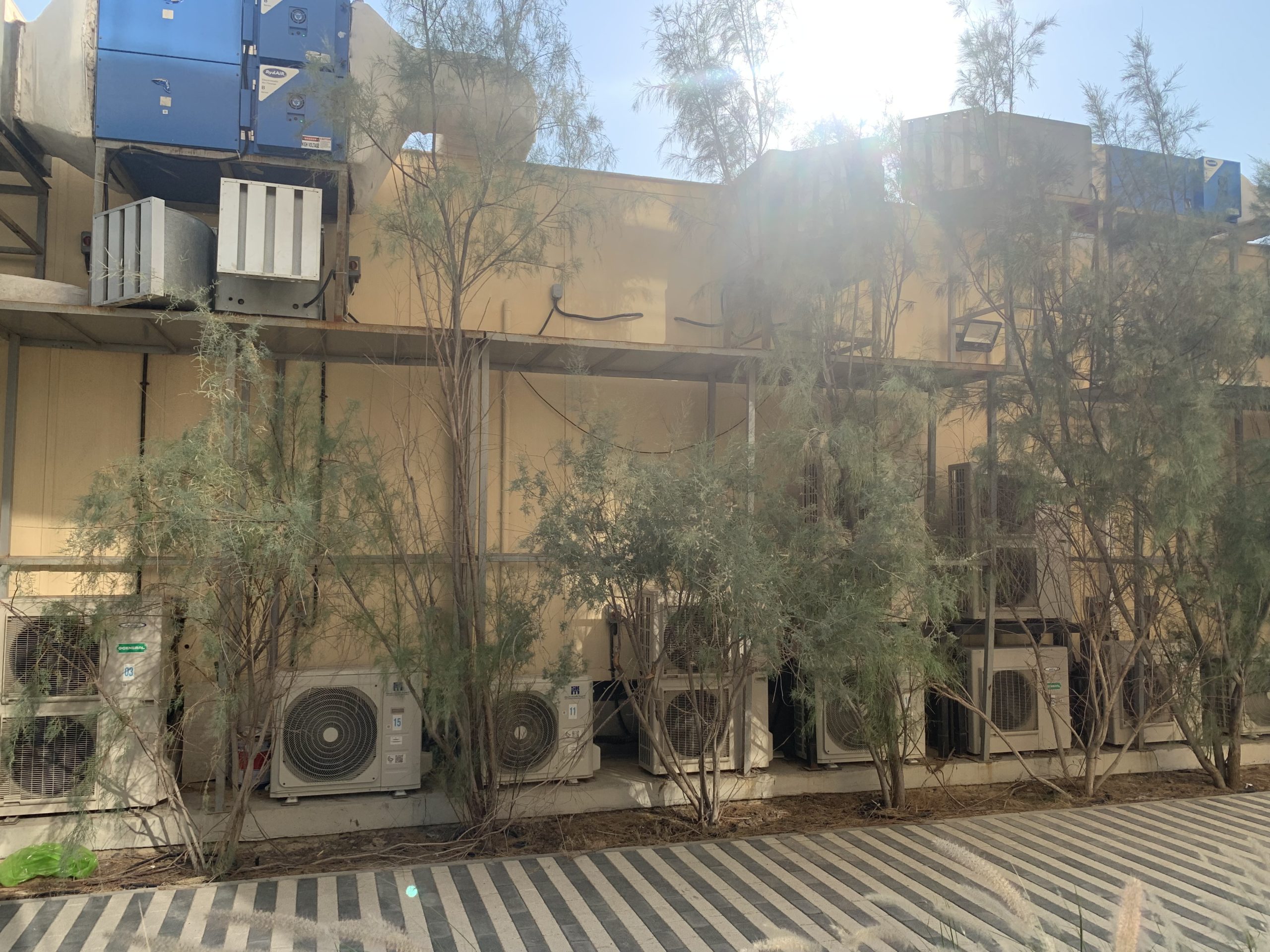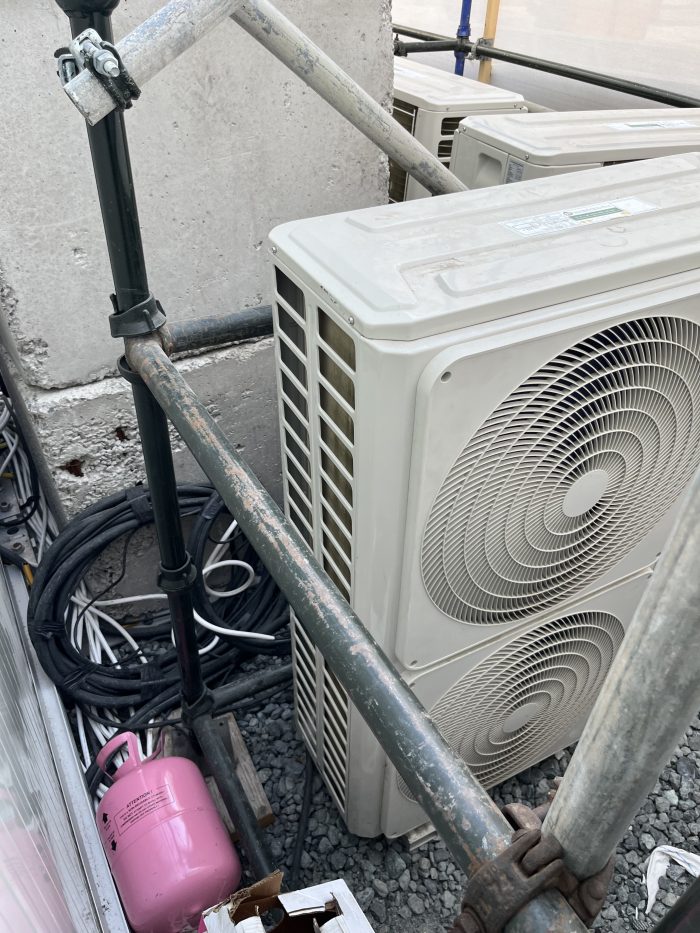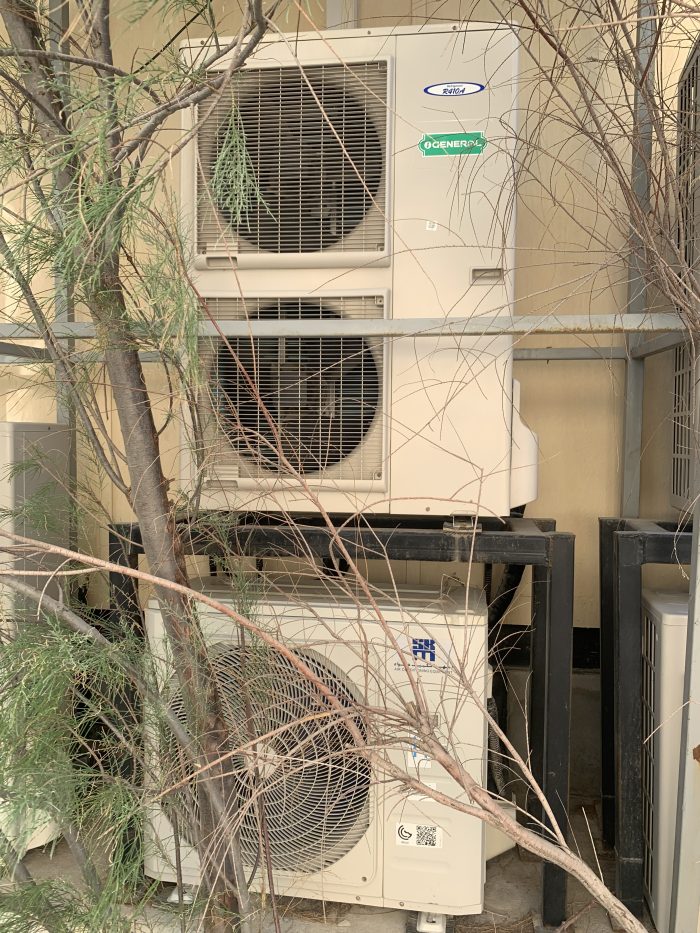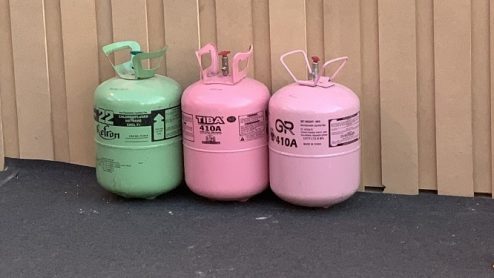The UN CoP28 climate summit venue in Dubai is being cooled with climate-wrecking gases
Some 97,000 people are in Dubai for the UN CoP28 climate summit – and EIA can reveal they are being kept cool with unsustainable, energy-inefficient cooling units containing potent climate-polluting refrigerant gases.
Countries have gathered to keep global warming to below 1.5C – but our campaigners have documented the widespread use of climate-wrecking hydrofluorocarbon (HFC) and hydrochlorofluorocarbon (HCFC) refrigerants in air-conditioning units around the venue.

HFC-410A and HCFC-22 units at CoP28 (c) EIA
The revelation comes just days after more than 60 countries, including host United Arab Emirates, signed the Global Cooling Pledge, launched at a high-level event on 5 December and committing signatories to reduce emissions from the cooling sector by 68 per cent by 2050.
In four of the 94 CoP venue buildings where EIA documented air-conditioning (AC) units, all 28 units examined were found to be utilising either HFC-410A (a potent greenhouse gas with a Global Warming Potential of 2,245) or HCFC-22 (a potent greenhouse gas and ozone-depleting substance with a GWP of 1,960).
Further, the energy efficiency ratings of the units examined were one or two stars out of five, well below the best available technology on the global market.
Based on the estimated number of AC units in the four buildings (at least 124 units) and the proportion of HFC-410A/HCFC-22 in the 28 units with accessible labelling, EIA estimates that the AC units in these four buildings alone contain more than 300kg of HFC-410A and more than 130kg of HCFC-22.
The warming impact of this quantity of these refrigerants is equivalent to almost 1,000 tonnes of carbon dioxide equivalent (CO2-e) refrigerant – and this is just a fraction of the potent greenhouse gas refrigerant in use at the venue.
EIA UK Climate Campaigner Sophie Geoghegan said: “While it’s welcome to see passive cooling strategies to keep participants cool between the various buildings, including shaded walkways, trees and vegetation and water features, the use of such inefficient systems with climate-damaging fluorinated gases is extremely disappointing.
“Year after year, the annual climate change conference is contributing to the climate emergency by the failure of the CoP hosts to implement sustainable cooling in their procurement for the venue. EIA’s team on the ground made similar discoveries at CoP27 in Egypt last year.
“The United Nations Framework Convention on Climate Change (UNFCCC) and future UN climate summit host countries need to tackle cooling emissions at all future events.”
HCFCs are being phased out under the Montreal Protocol, while HFCs are being phased down through the Kigali Amendment to the Protocol, agreed in 2016. Although most Article 5 Parties have until 2024 to freeze their HFC consumption, fast-acting measures are needed to control rapid growth in HFC demand.
EIA US Climate Policy Analyst Beth Porter said: “Based on the Global Cooling Pledge agreed at CoP28 and the myriad of discussions throughout the conference on the urgent need for accessible, sustainable cooling, EIA urges the UNFCCC to request host countries to develop transparent procurement plans outlining the steps taken to ensure climate-friendly cooling and to report on related emissions from the meeting.”





